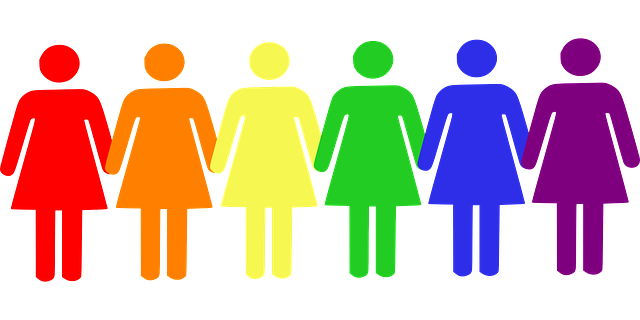If you haven’t heard of the #MeToo Movement, chances are you were living under a rock. This Movement, which gained momentum in 2017, was in the news for over a year. In this time, it has changed the way men and women perceive each other and how they perceive brands that communicate gender-targeted advertising.
If marketers wish to remain politically-correct, emotionally mature and socially-relevant, they need to embrace the #MeToo Movement and create unique content to go with it.
What was the #MeToo Movement?
The phrase “Me Too” first surfaced in a 2006 Myspace campaign spearheaded by social activist Tarana Burke. The campaign, entitled “Empowerment through Empathy,” was designed to raise awareness about the sexual abuse coloured women faced at the workplace.
In 2017, the phrase was picked-up by actresses who were the victims of sexual abuse. Soon, more women from across industries, cultures and age groups spoke-out about the abuse they faced at the hands of their colleagues. Soon, the #MeToo Movement started to spread like wildfire. By September 2018, “#MeToo” had already been used over 19 million times on Twitter, in English. There were a million more mentions on other channels and in other languages.
This Movement gave women the freedom to speak out and gain justice for the wrongs that were done to them. It made men more sensitive to the challenges faced by their female counterparts, and it enabled companies to set-in-place policies that took stringent action against those who were guilty of sexually harassing their colleagues.
Image Credits: Pixabay
Why is the #MeToo Movement important for companies?
Companies are major sources of products, services and employment for the society. When a company hires a known offender as an employee or fails to fire a person despite evidence of their crime, they unconsciously declare their support of the accused/criminal. Such a stance can hurt the brand image of a company.
Studies show that 76% of consumers refuse to purchase from brands they consider unethical. 56% of these customers outright stop purchasing from perceived unethical brands and 35% of customers will continue to boycott the brand, even when there are no substitutes for the product; ultimately boycotting the product itself.
A company that outright supports people accused of harassing their colleagues or a company that remains ambiguous on its stance about the #MeToo Movement is at risk of being considered “unethical” by customers. You could end up losing a lot of business and have your image shattered by your inactivity.
But this doesn’t have to be the case. You can choose to learn from the mistakes committed by other companies and use lessons that have risen from the #MeToo Movement, in order to successfully run your marketing campaigns.
Here are three marketing lessons brands can learn from #MeToo:
Image Credits: Pixabay
- Be honest about your history and take a stand
Many companies believe that supporting a movement like the #MeToo will protect them from mistakes they’ve made in the past. So, they tend to support such movements when it is convenient; ignoring them when they aren’t.
American retail giant Walmart comes to mind here. Walmart has a slew of sexual harassment cases against it; some still active, others closed. Despite overwhelming evidence of its guilt, the company continued to attest to its innocence; even claiming that it didn’t follow negligent management practices.
But, when the #MeToo pressure mounted, Walmart tried to change its stance. In 2018, the company removed the Cosmopolitan magazine from its check-out lines, stating that the publication supported harassment of women. It even increased investments in its pro-women marketing campaigns. But despite this all, the company still never accepted its anti-women policies and failed to apologise.
Activities like this create confusion in the minds of customers. When what they read online is different from what they see and what they hear, they begin to doubt your intentions. They may choose to sever ties with you. Not only will you lose your customer base, but you’ll also stand to lose the brand image you’ve spent years trying to build.
Learning: When marketing your brand/product, create content that unequivocally explains your belief and your intentions. This will help your customers understand your motives better, and it may prevent them from leaving you. This will also make your customers more open to forgiving you for your past transgressions.
Image Credits: Pixabay
- Don’t perpetuate misogynistic notions
This might seem obvious, but it isn’t so for some brands.
Brands sometimes make blatant discriminatory sentences about specific genders, while claiming to act in support of gender equality. Their claims then begin to look pretentious.
Czech beer brand Aurosa is an example. In 2017, they released an advertisement for a product – Beer for Women – which was perceived by customers to be extremely sexist and stereotypical. In its Instagram page, Aurosa claimed that beer could “only be enjoyed by men” because of its masculinity and it can’t be enjoyed by women without sacrificing their femininity. The answer – Beer for Women – a light beer-like drink that helps women stay women.
In their defence, the company claimed that they were pro-women-drinking and that they had released their product specifically to support this belief. Safe to say this social media post received much backlash.
Learning: If you’re set to create buzz around your new product, don’t take sexist digs at your customers. The #MeToo Movement taught us that equality and respect go a long way in nurturing a positive relationship. So, if your product is meant for a specific gender, create content that is gender-positive, or at-the-most, gender neutral. Don’t use puritanical notions as a PR tool.
Image Credits: Pixabay
- Write for real men
If there’s one message that the #MeToo Movement gives us, it is that the victim can be both women and men. Contrary to popular belief, men too experience extreme harassment, both physical and emotional.
Brands often engage in this type of harassment through their discriminatory content. Often, these communications perpetuate wrong notions of what’s masculine and what’s not. Such biased content can influence impressionable minds and wreak havoc. As a responsible company, your marketing content should be responsible too.
Take the example of beer giant MillerCoors. The brand released their variant – Miller Lite – in 2011. To promote their product, they released an ad called “Man Up,” which follows a young man, who after buying another brand of beer, is tackled to the ground by women and accused of being unmanly for not choosing Miller Lite. The ad received much flak for its judgmental and homophobic content.
Learning: When creating promotional content targeted at men, remember not to be too prejudiced. Celebrate your customers and do not encourage ideas of toxic masculinity. The Dove Men+Care campaign is an excellent example of how to create marketing content for real men. This insightful article explains what this campaign was all about.
Conclusion
The #MeToo Movement has had a far-reaching impact on content marketing, advertising and branding. In addition to increasing awareness about women’s reality at the workplace, it has also brought to the fore the many prejudicial, stereotyped and homophobic marketing that companies often engage in.
Brands wanting to use the lessons of the #MeToo Movement must understand that there is a need for a massive overhaul of their marketing mindset. One way to do this is to hire responsible content marketers, who can help you manage your reputation through the creation of socially-responsible marketing content.
For more information about the global #MeToo Movement, visit Google’s Me Too Rising.
Feature Image Credits: Pexels




